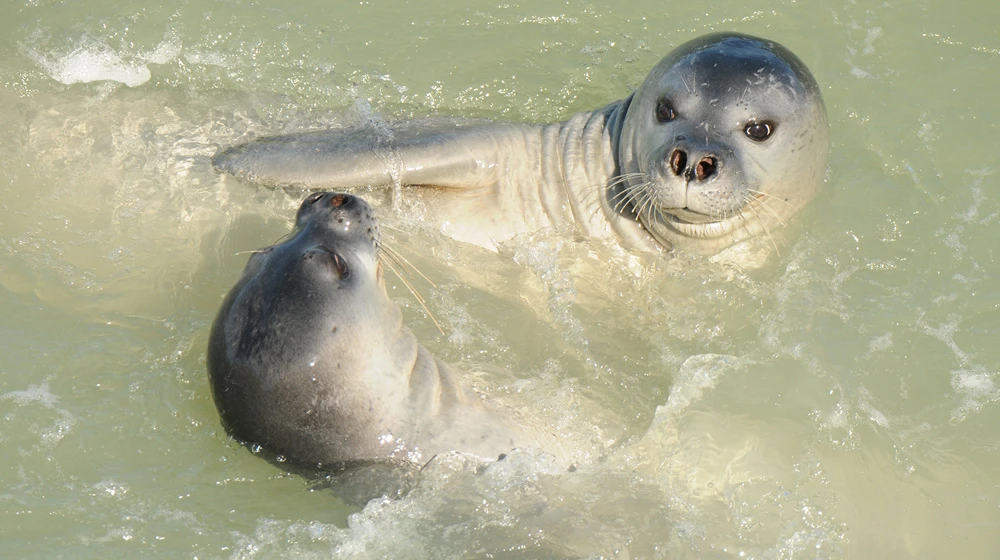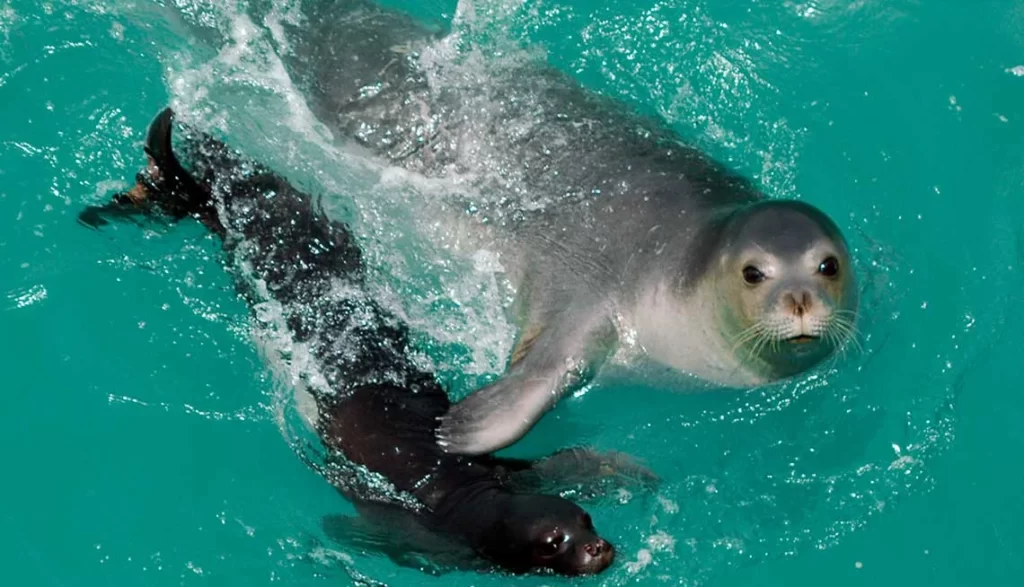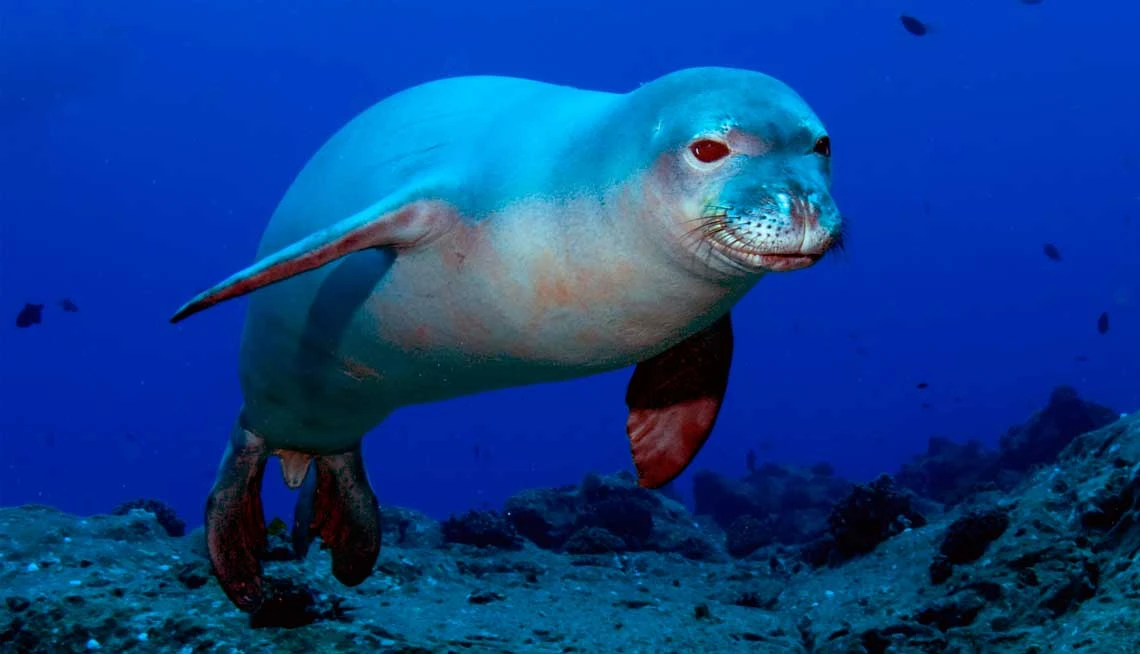Have you ever wondered: Why is the Mediterranean Monk Seal endangered? In this article, we will explore everything about this unique species, its characteristics, and the challenges it faces in today’s environment. I promise that by the end of the article, you’ll discover a fascinating curiosity that will surprise you. Ready? Let’s start.
What is it?
The Mediterranean Monk Seal, also known as Monachus monachus, is a marine mammal that was once abundant throughout the Mediterranean and the Northeast Atlantic but now, its distribution has drastically reduced. This marine creature gets its name, ‘monk seal’, from the hood and belt formed by its skin, reminiscent of a monk’s habit.

Characteristics
This species is quite impressive in terms of size. You might wonder, how much does it weigh and measure? An adult monk seal can weigh between 250 and 400 kilograms and measure up to 2.7 meters in length.
Their robust bodies are perfectly adapted to aquatic life, with dense and fatty skin that provides buoyancy and insulation in the cold waters of the Mediterranean. Their large, dark eyes allow them to have excellent vision both inside and outside the water.
Habitat and Distribution
Where does this fascinating creature live? The Monk Seal used to have a much wider distribution range, spanning from the Iberian Peninsula to the Black Sea. However, its presence has now been mainly reduced to some regions of Greece, Turkey, and possibly North Africa.
These marine mammals prefer temperate waters and areas with coastal caves where they can rest and reproduce away from predators.
Did you know? Mediterranean Monk Seals have a peculiar habit of 'yawning' when they are at rest. It is believed that this behavior may have a function in social communication. Click To TweetReproduction
The reproduction of the Mediterranean Monk Seal occurs once a year, generally between September and November. The female gives birth to a single pup after a gestation period of approximately 11 months.
The pups are born in sea caves, which provide protection against predators and harsh weather conditions. During the first weeks, the mother intensively nurses her pup and protects it. It’s important to mention that the females are especially careful with their pups, demonstrating strong maternal bonds.

After about six to seven weeks, the pup is strong enough to swim and start eating solid food, though it still remains close to its mother. They reach sexual maturity at 4-6 years.
Why is the Mediterranean Monk Seal Endangered?
It is critically endangered due to several factors:
- Overfishing: This has drastically reduced the populations of fish that serve as food for these seals.
- Accidental Catch: Seals often get caught in fishing nets, causing injuries or even death.
- Habitat Loss: Coastal development for tourism and industry has destroyed many of the coastal caves that the seals use for reproduction and rest.
- Pollution: Oil spills and other marine pollutants can be deadly to the seals.
- Hunting: Although now prohibited, hunting these seals for their skin and fat in the past has contributed to their decline.
These combined factors have led to a drastic reduction in the population, classifying it as a critically endangered species.
Did you know? Mediterranean Monk Seals have softer skin compared to other seal species, making them attractive targets for hunters in the past. Click To TweetConservation Status
The conservation status of these seals is worrisome. Classified as “Critically Endangered” on the International Union for Conservation of Nature (IUCN) Red List, the Mediterranean Monk Seal is one of the most endangered seal species in the world. Conservation organizations and governments are working to protect these seals through the implementation of protection areas, fishing restrictions, and awareness programs.
How Many are Left in the World and What Can We Do?
Currently, it is estimated that there are fewer than 700 Mediterranean Monk Seals in the world. While this number is alarmingly low, efforts are ongoing to protect and increase their population. However, much remains to be done.
As individuals, we can contribute to their conservation by supporting wildlife conservation organizations, reducing our impact on coastal habitats, and promoting sustainability in our communities. It is also important to educate others about these beautiful animals and the challenges they face.
Yes, the main natural predators are sharks and orcas. However, the greatest threat comes from humans.
It primarily feeds on a variety of fish and mollusks that inhabit the Mediterranean.
They are relatively solitary animals, except during the mating season and when females are caring for their pups.
They can stay submerged for about 20 minutes before needing to surface for air.
Mediterranean Monk Seals reach sexual maturity around the age of 4. During the mating season, the female gives birth to a single pup which she will care for intensively for a year.
Despite the challenges, there is hope for these seals through conservation efforts and greater awareness of their situation.
And before we finish, did you know that despite its critical conservation status, the Mediterranean Monk Seal is one of the world’s oldest seal species, with a lineage that dates back millions of years?
Now that you know more about this species, we hope you’ll join us in ensuring the survival of this incredible species. Remember, every little action counts.

